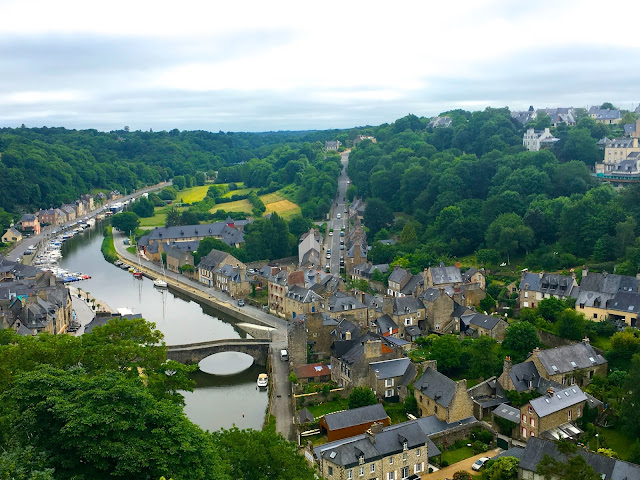Each day I am in Brittany I think about how beautifully my work at school has come together with my journey to this region. This past year, my French studies have revolved around the Arthurian legend and medieval literature, much of which is deeply rooted in Brittany. To be in this place then, and to see before my eyes what I have imagined in my mind for so long is extraordinary.
There are reminders everywhere of the magic of this land, even if they are as subtle as a blossoming honeysuckle bush that crawls up an ancient, but enduring granite wall. It is gentle and fragrant, making me think of one of my favorite lais by Marie de France, Le Chèvrefeuille (honeysuckle in French, literally translating to "Goat's ear"). It comes from the myth of the tragic lovers Tristan and Iseut, a classic Breton story that every Breton knows.
Leaning off the jagged stones of this old fortress, it is impossible not to feel the thousand years of history beneath my palms. Even though cars can be seen driving by below, I close my eyes for just a second and imagine the cobblestones resounding the journeys of Les Chevaliers de la Table ronde.

Dinan has a small port that lies on La Rance, a river that flows into La Manche (The English Channel) as it reaches the northern coast at Dinard and St. Malo.
There is no shortage of regional products here, especially sparkling cider. Shopkeepers with storefronts such as these smile as we look into the windows at the endless cider racks of every strength ranging from "doux" to "brut."
One of the most memorable places in Dinan though is La basilique Saint-Sauveur. This church holds within a concrete cenotaph the heart of a chevalier, Bertrand Du Guesclin, who was a Constable of France during the Hundred Years War. It was eerily beautiful, and every bit of chatter was softly extinguished the moment we lifted our eyes to the ceilings that mimicked heaven and felt the cool, incense-filled air touch our faces.
It is remarkable that in France, religious orthodoxy is intensely preserved. I have been struck by how deeply traditional the Mass is celebrated here, and how reverence is shown without apology. It is clear that regardless of one's beliefs, a place like this is holy and quiets the heart in a way that cannot be explained. We originally walked around in one group, but we all gradually began to break off, and most spent at least a few moments alone in silence.
The candle on the right is mine, lit for all of you that I am thinking about, who cannot be here with me.
As we begin to head out, the sun burns through the thick clouds for the first time in almost a week. Though we may not yet be at the sea, you can still smell the iodine and feel the heaviness in the air, boding the presence of a not so far off ocean.































